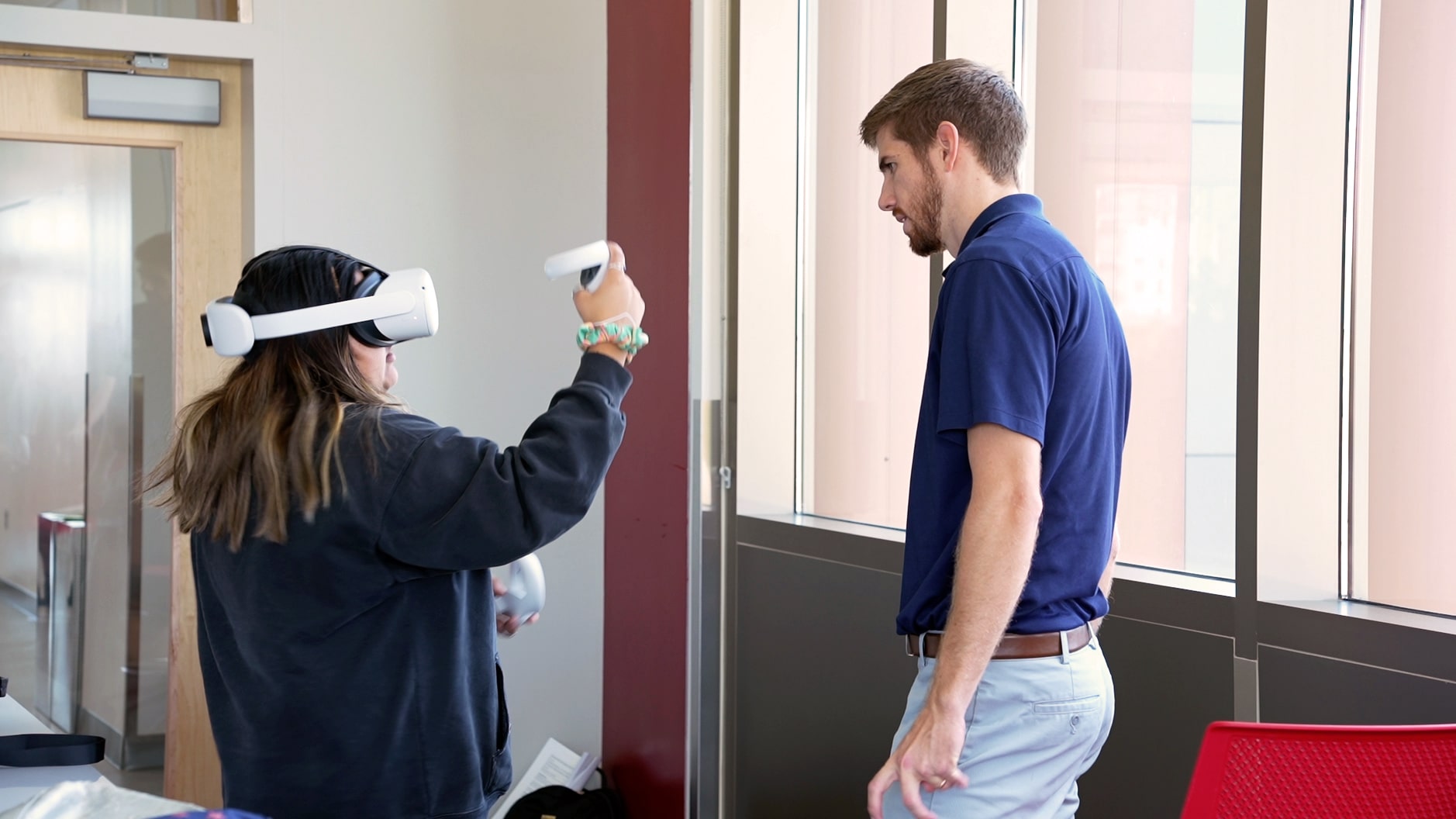Examples

VR Physics Labs
The VR Lab Design
In collaboration with the Physics professor, a learning designer defined learning outcomes for each lab. Most of the learning outcomes were nearly identical to the in-person labs. Using a backward-design approach, they then determine a gamified way to prompt students to apply concepts learned in online modules in the VR lab environment.
The Team
The team that created the VR software applications included a Physics faculty member, a learning designer, and a group of nine undergraduate students studying computer science, software engineering, or animation at Utah Tech University. The students worked collaboratively as interns under the direction of the learning designer and the faculty member to design, develop, and test each lab.
The Tools
A synthesized implementation of a variety of tools was required to design, test, and implement the VR physics labs. Unity Game Engine was used as the primary design software for the labs. Blender was used to model and animate the 3D assets. Arbor XR Headset management system was used to wirelessly update app versions to the headsets. Normcore was used for the multi-user networking functionality. The labs were experienced on the Meta Quest 2 standalone VR headsets.
Instructional Design
Gamification: The designers and developers sought to add an element of engaging problem-solving via the introduction of gamified scenarios requiring the use of physics knowledge and skills. This allowed the students to become more immersed in the lab content and feel more motivated to solve the problems presented to them.
Peer collaboration: Another dominant focus in the design of the labs was peer-to-peer interaction and collaboration. Immersive technologies and online learning can often be isolating (or at least are perceived to be that way), so the designers implemented a synchronous, multi-user environment that would allow students in a small group (2-3 students) to be present in the same virtual space at the same time, hearing each other's words and seeing one another in avatar form. This allowed the students to still benefit from the collaborative element of in-person classes.
Interaction design
The design team strove to take advantage of the affordances of an immersive 3D environment as much as possible. This focus led them, for example, to create a highly spatial menu system that surrounds the user and requires actions such as e grabbing and placing items in different locations to run the lab.
